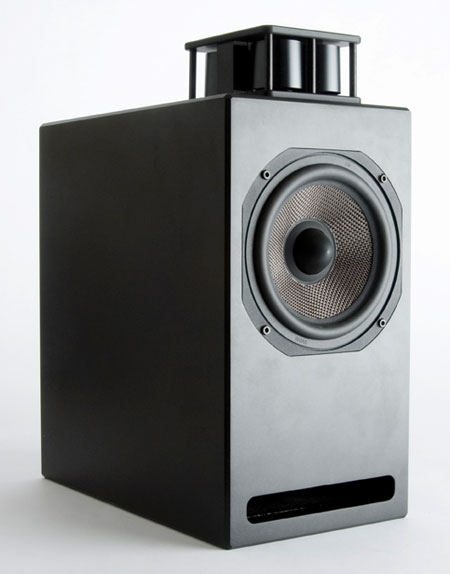Let There Be LET

One of the biggest problems faced by transducers of all types is the speed efficiency with which they convert mechanical to electrical energy and vice versa. This is especially challenging for relatively massive speaker drivers, which must overcome a lot of inertia—the tendency for objects to resist changes in their motion—and move in response to the electrical signals they are fed.
Another issue related to mass is frequency response. For example, a tweeter of low mass will generally have a higher top end than one with greater mass, because mass is typically reduced by making the diaphragm smaller and/or stiffer, which shifts its break-up mode higher in frequency.
The faster the driver can respond, the more accurately the attacks, or leading-edge transients, will be reproduced, which improves the perceived sound quality immensely. As a result, most speaker drivers use a diaphragm with as little mass as possible—the more mass, the more inertia—and a voice-coil motor with as much power as possible.
Still, getting any diaphragm to respond quickly isn't easy, so a To address these issues, a company called High Emotion Audio has taken a different approach with its new tweeter called the Leading Edge Transducer (LET). Instead of moving the entire diaphragm in and out, the voice coil vibrates one edge, inducing the waveform to propagate through the diaphragm's special plastic material, absorbing it at the other edge to prevent reflections within the material. (Actually, this concept isn't new—a similar tweeter from a company called Linaeum made a splash about 15 years ago, but it has been largely forgotten since then. High Emotion Audio bought the intellectual property rights for that technology and has spent the last 10 years refining it.)
The inertia that must be overcome in this process is far less This process is said to be far more efficient than conventional pistonic vibration, and the company claims that the voice-coil motor is more powerful than most. allowing the LET to reproduce attack transients much faster than conventional tweeters. In addition, the LET is extremely efficient—about 100dB/W/m—and In addition, the diaphragm's surface area is about five square inches (compared with less than one square inch for most tweeters), which, combined with its sensitivity of about 100dB/W/m, allows it to produce very high sound pressure levels with relatively little power. An analogy drawn by the company is cracking a whip—a small motion in the handle can create a loud pop once the waveform reaches the tip.

The first products using this technology are the Bella 5 and Bella 7 (pictured here), rectangular bookshelf speakers that combine two hemicylindrical LETs firing forward and two more firing backward with a proprietary pistonic midrange/bass driver and custom-designed crossover in an optimized, ported cabinet. The tweeter's voice coils are attached to the inner edges of the curved diaphragms, and the waveform propagates to the damped outer edges. Also available are similar models with pyramidal cabinets, the Pyra Bella 5 and Pyra Bella 7 (shown at the top of this blog). Both 5-series models, which have 5.25-inch cones, list for $4950/pair, while the 7-series models have 6.5-inch woofers for $5950/pair.
Among the alleged advantages of this design is an exceptionally wide dispersion—the company claims 120 degrees at 20kHz—and ruler-flat impedance at all frequencies, allowing the speakers to sound roughly the same being driven by many different amplifiers in a wide variety of rooms. Another claimed benefit is extreme clarity, allowing you to hear deeper into the music.
Even more important, the company claims to have clinical evidence from research conducted at Belmont and Vanderbilt Universities in Nashville, Tennessee, that the LET's super-fast transient response and other design factors affect the human limbic system—which regulates emotion—more than conventional speakers, resulting in a more deeply moving experience and a greater sense of realism. In fact, the company's ultimate goal is to approach the emotional impact of live performance, which has heretofore eluded virtually all electronic audio systems. Leveraging related research, High Emotion Audio is also working on software to make digital recordings sound more natural.
The Bella 7 has already made its way into some recording studios in Nashville, where the company is based, and the response has been uniform praise. Among the comments is that it "undresses" recordings, allowing engineers to more accurately evaluate their work. This may or may not be a good thing for consumers, depending on the quality of the recording, but the technology embodied in the LET is fascinating nonetheless.
- Log in or register to post comments


























































